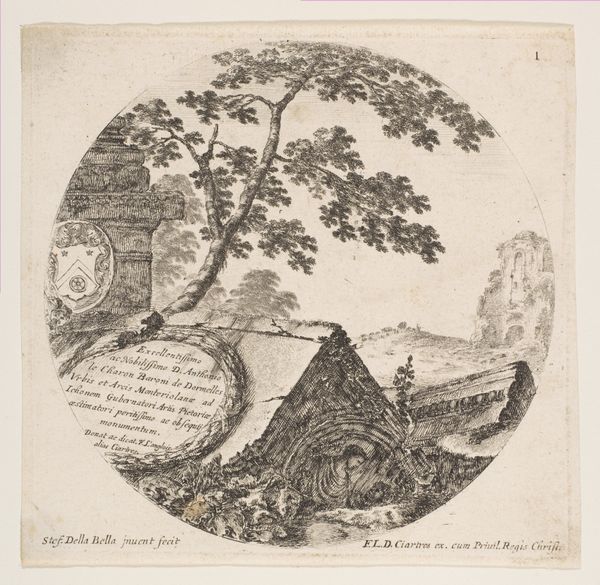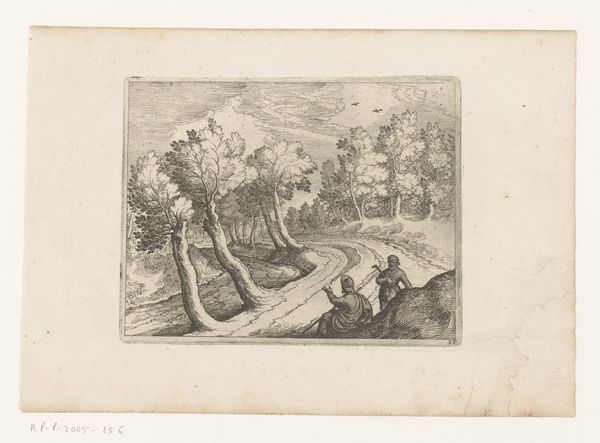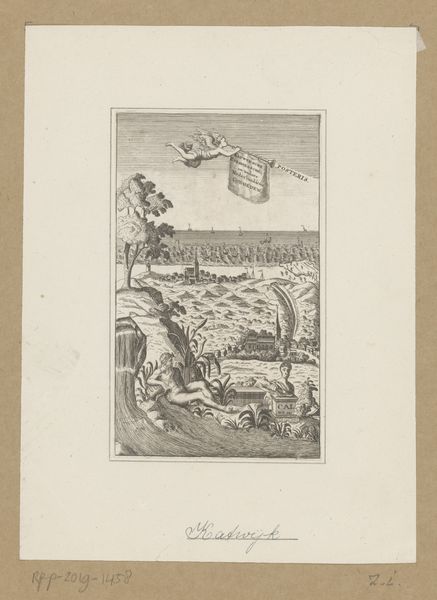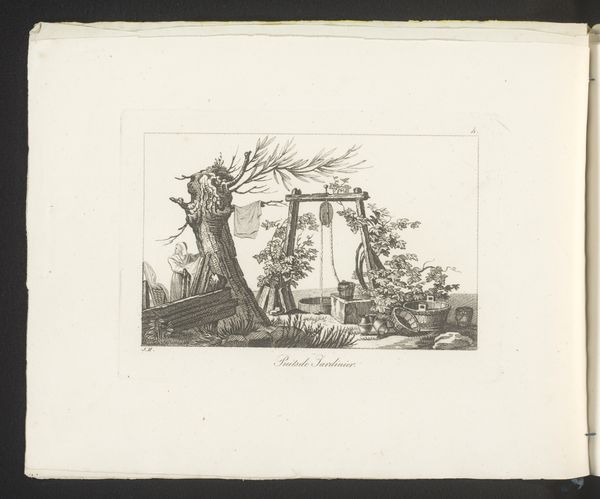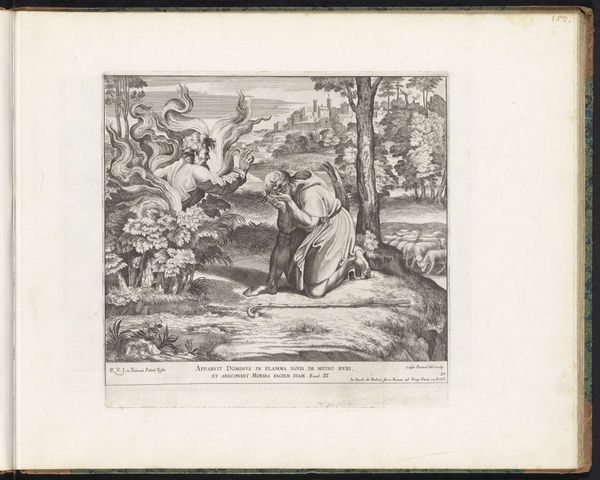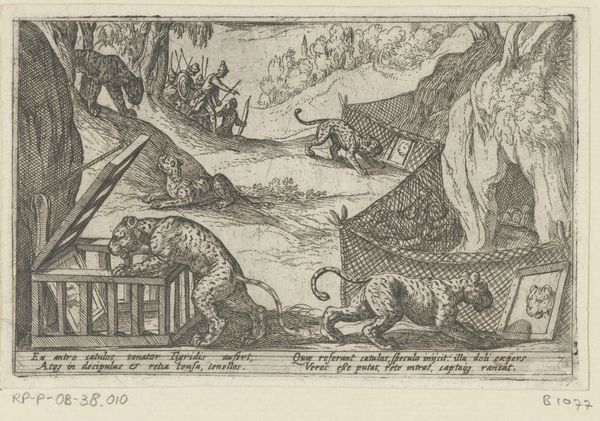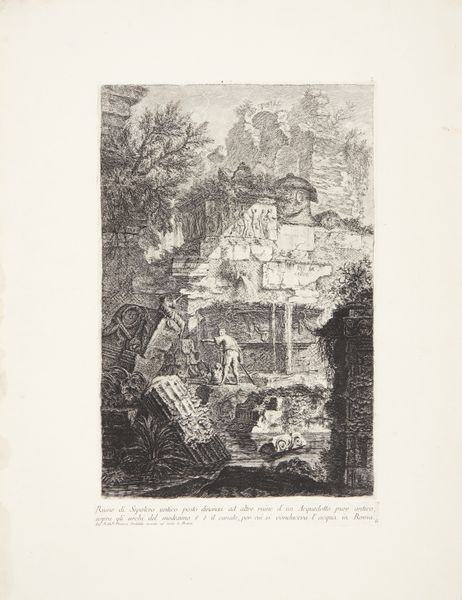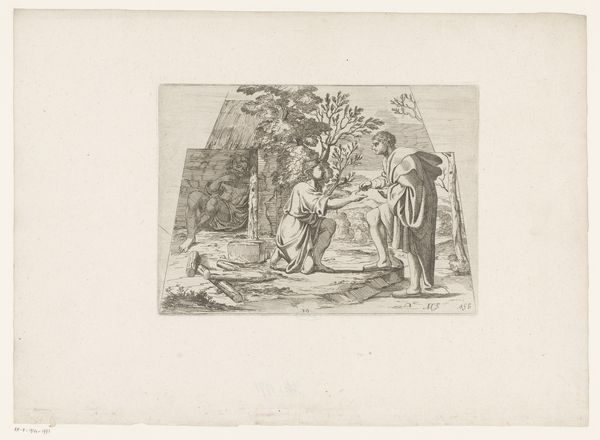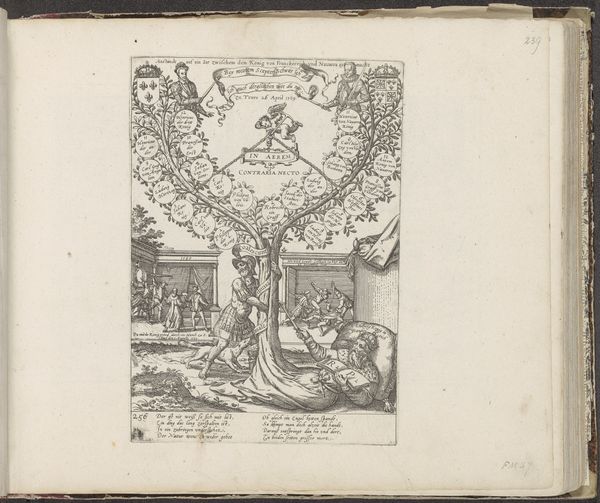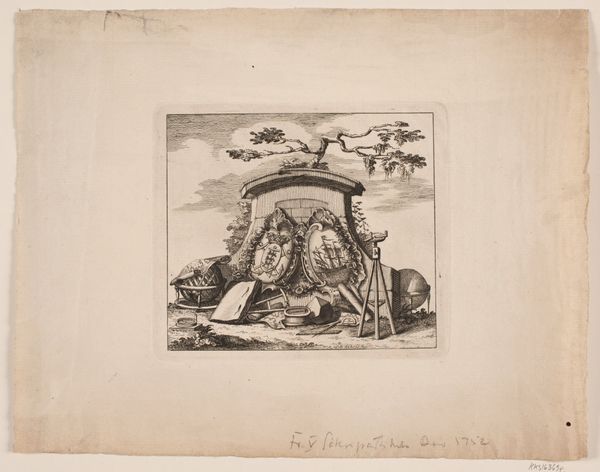
print, etching
#
baroque
# print
#
etching
#
landscape
#
genre-painting
Dimensions: height 128 mm, width 142 mm
Copyright: Rijks Museum: Open Domain
Editor: This etching, "Titelprent met familiewapen in een landschap met geit" by Johann Heinrich Roos, dated 1671, caught my eye. It feels like such a formal declaration placed in a whimsical setting. How can we unpack this interesting contrast? Curator: It’s fascinating how these formal declarations adopted such genre settings. Considering this etching, let's examine how aristocratic identity was being constructed and consumed in the late 17th century. Who was this Fleischbein family, and what role did visual representations like this play in shaping their public image and social standing? Editor: That’s a good point. It's almost like branding, centuries before corporations. The coat of arms, the dedication, it's all carefully crafted. Curator: Precisely. And the seemingly incongruous placement of this declaration within a landscape adds another layer. Landscapes were becoming increasingly popular, reflecting a broader cultural interest in nature. Is it a conscious alignment of the family with pastoral values? Does it show some estate to be overseen? Editor: Hmm, I wonder if the goat has a symbolic meaning, maybe a reference to prosperity or fertility? Curator: Symbolism like that wouldn’t be surprising. The politics of imagery were crucial; every detail was carefully considered to convey specific messages about the family's identity and aspirations. Editor: So it's less about a spontaneous artistic expression and more a carefully orchestrated statement. I had not considered its function in shaping public opinion. Curator: Exactly! Looking at art this way, it allows us to understand art not as isolated masterpieces, but as active participants in the social and political landscape of their time. Editor: I learned something new today! I realize that to see a new angle, all that is required is a little more historical context. Thank you!
Comments
No comments
Be the first to comment and join the conversation on the ultimate creative platform.
